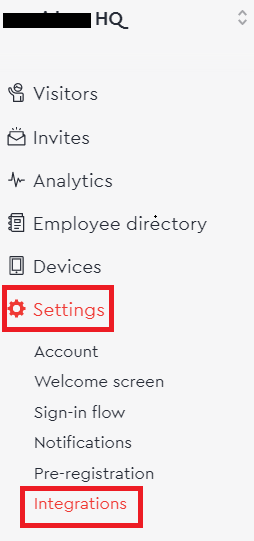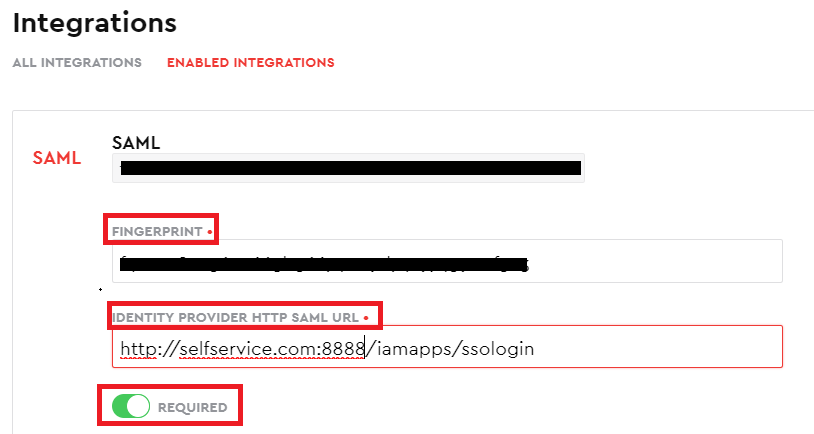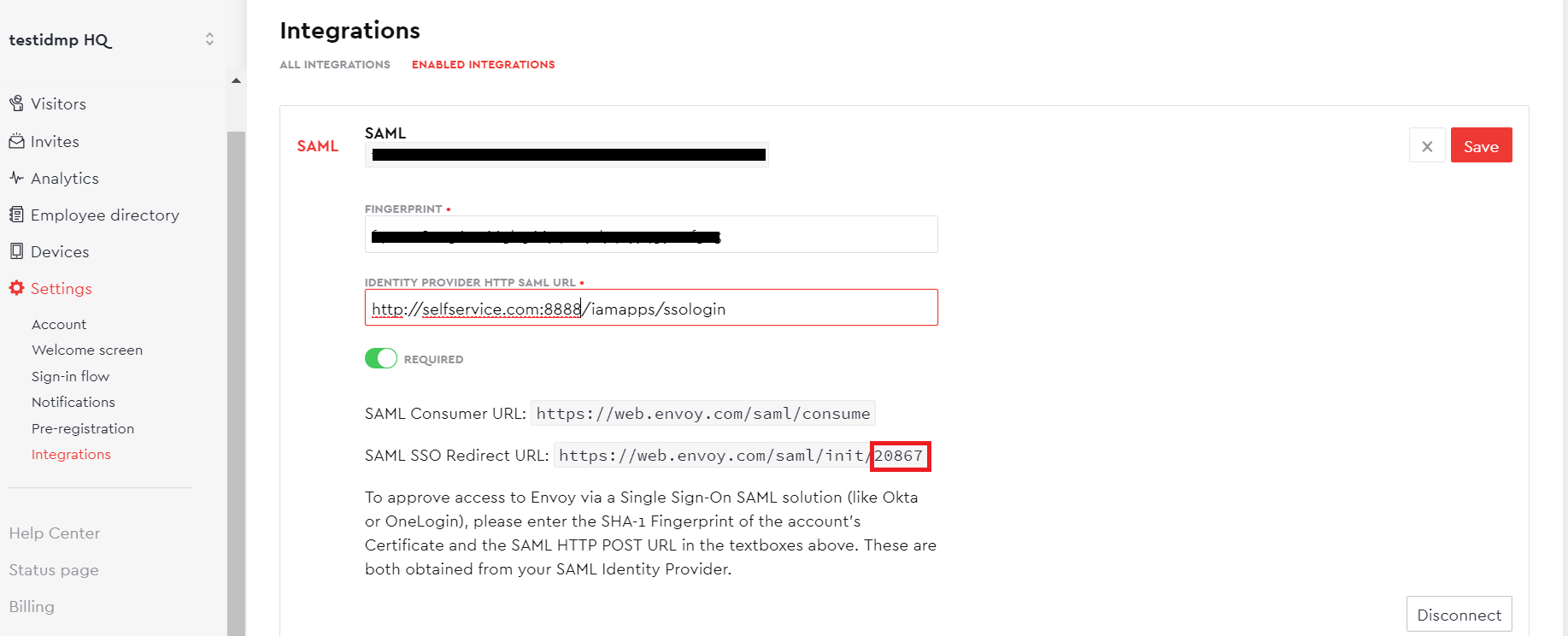Configuring SAML SSO for Envoy
These steps will guide you through setting up the single sign-on functionality between ADSelfService Plus and Envoy
Prerequisite
-
Log in to ADSelfService Plus as an administrator.
- Navigate to Configuration → Self-Service → Password Sync/Single Sign On → Add Application, and select Envoy from the applications displayed.
Note: You can also find Envoy application that you need from the search bar located in the left pane or the alphabet wise navigation option in the right pane.
-
Click IdP details in the top-right corner of the screen.
-
In the pop-up screen that appears, note down the values of Login URL and FingerPrint. We will need these values in a later step.
Envoy (Service Provider) configuration steps
-
Now, log in to your Envoy administrator account.
-
Navigate to Settings → Integrations → Single Sign-on (SAML) and click Install.

-
In the FINGERPRINT field, enter the value of the FingerPrint you had saved in Step 4 of Prerequisite.
-
In the IDENTITY PROVIDER HTTP SAML URL, enter the Login URL value you had saved in Step 4 of Prerequisite.
-
Toggle the REQUIRED switch to green, if you want to force SSO for all users except Global Admin users.

-
From the SAML SSO Redirect URL, copy the Account ID number. This value will serve as the input for Account ID while configuring Envoy in ADSelfService Plus.

-
Click Save.
ADSelfService Plus (Identity Provider) configuration steps
-
Now, switch to ADSelfService Plus’ Envoy configuration page.
-
Enter the Application Name and Description.
-
In the Assign Policies field, select the policies for which SSO need to be enabled.
Note:ADSelfService Plus allows you to create OU and group-based policies for your AD domains. To create a policy, go to Configuration → Self-Service → Policy Configuration → Add New Policy.
-
Select Enable Single Sign-On.
-
Enter the Domain Name of your Envoy account. For example, if you use johndoe@thinktodaytech.com to log in to Envoy, then thinktodaytech.com is the domain name.
-
In the Account Id field, enter the Account ID value you had saved in Step 6 of Envoy configuration.
- In the Name ID Format field, choose the format for the user login attribute value specific to the application.
Note: Use Unspecified as the default option if you are unsure about the format of the login attribute value used by the application
-
Click Add Application
Your users should now be able to sign in to Envoy through ADSelfService Plus.
Note:
For Envoy, both IdP-initiated and SP-initiated flows are supported.
Don't see what you're looking for?
-
Visit our community
Post your questions in the forum.
-
Request additional resources
Send us your requirements.
-
Need implementation assistance?
Try OnboardPro


